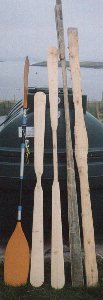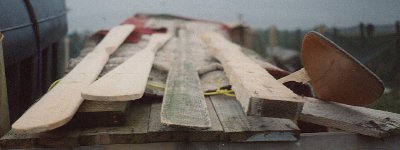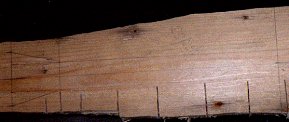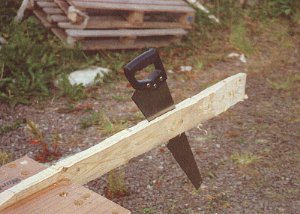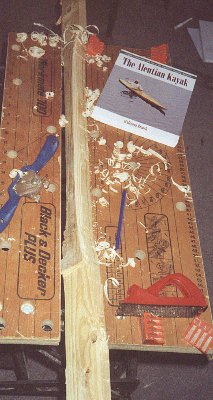| You now have the paddle blank.
All the gross work has been done. Now to the bits I enjoy
The next thing I tackle is shaping
the loom. For the Greenland style it is usually an oval with its long axis
at 90 degrees to the width of the blade. I have seen it written that the
loom was sometimes the square section with the corners rounded off. I tried
this with my first paddle It wasn't bad and gave a good grip in the hand
butnyou have to size it to ensure it is not too big for you.
The loom I do now is geared
around the blade that is worked on one side, the Aleut style, and consists
of a half oval on the worked side of the blade and a rounding of the corners
on the none worked side - front face.
The tools I use are a flat bladed
spokeshave and a small surform.
As you can see from the image
I have Wolfgang Brincks book The Aleutian Kayak. One day I just may have
the time and space to take paddle making into kayak making
Dont work to completion just
until the general shape is there.
|
